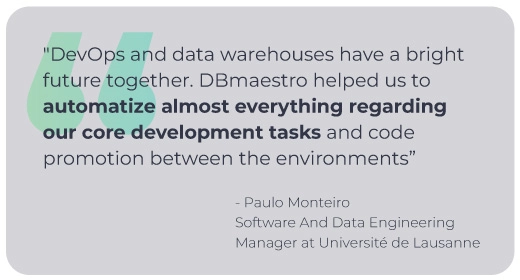Continuous Integration and Continuous Delivery (CI/CD) have become essential practices for delivering high-quality software quickly and efficiently. While CI/CD is widely adopted for application development, its implementation for databases is often overlooked. This article explores the concept of CI/CD for databases, its importance, and how it can revolutionize database management within DevOps environments.
What You’ll Learn:
- The fundamentals of CI/CD in DevOps
- How CI/CD pipelines work for databases
- The importance of implementing CI/CD for database management
- Steps to set up a CI/CD pipeline for databases
- Challenges and solutions in database CI/CD
What is CI/CD in DevOps?
CI/CD is a set of practices that automate and streamline the software development lifecycle, from code integration to deployment. In the context of DevOps, CI/CD plays a crucial role in bridging the gap between development and operations teams, enabling faster and more reliable software delivery.
Continuous Integration (CI) involves automatically integrating code changes from multiple contributors into a shared repository. This process includes building the application and running automated tests to detect integration issues early.
Continuous Delivery (CD) extends CI by automatically deploying all code changes to a testing or staging environment after the build stage. Continuous Deployment goes a step further by automatically releasing the changes to production.

What is a CI/CD Pipeline and How Does It Work?
A CI/CD pipeline is an automated workflow that orchestrates the steps involved in software delivery, from code commit to production deployment. For databases, this pipeline typically includes the following stages:
- Version Control: Database schema changes and scripts are stored in a version control system.
- Build: The pipeline retrieves the latest changes and builds the database objects.
- Test: Automated tests are run to verify database functionality and performance.
- Staging: Changes are deployed to a staging environment for further testing.
- Production Deployment: Approved changes are automatically deployed to the production database.
By automating these steps, CI/CD pipelines for databases ensure consistency, reduce manual errors, and accelerate the delivery process.
The Importance of CI/CD for Databases
Implementing CI/CD for databases offers several critical benefits:
- Improved Collaboration: CI/CD facilitates better coordination between database administrators, developers, and operations teams by providing a standardized, automated process for database changes.
- Reduced Errors: Automation minimizes the risk of human errors in database deployments, ensuring consistency across environments.
- Faster Deployments: CI/CD pipelines enable rapid and frequent database updates, allowing organizations to respond quickly to business needs.
- Version Control: By treating database changes as code, teams can track modifications, roll back changes if needed, and maintain a clear history of database evolution.
- Enhanced Testing: Automated testing within the CI/CD pipeline helps catch potential issues early in the development cycle, improving overall database reliability.
- Compliance and Auditing: CI/CD processes provide a clear audit trail of database changes, supporting compliance requirements and facilitating troubleshooting.
How to Set Up a CI/CD Pipeline for Databases
Setting up a CI/CD pipeline for databases involves several key steps:
- Version Control: Store database scripts, schema definitions, and migration files in a version control system like Git.
- Choose CI/CD Tools: Select a solution that supports DevOps for databases, such as DBmaestro’s DevOps Platform.
- Define the Pipeline: Create a pipeline configuration that outlines the stages for building, testing, and deploying database changes.
- Implement Automated Testing: Develop and integrate automated tests for database functionality, performance, and data integrity.
- Set Up Staging Environments: Create staging environments that closely mirror production for thorough testing.
- Implement Deployment Automation: Use tools like Flyway or Liquibase to automate database schema changes and data migrations.
- Monitor and Refine: Continuously monitor the pipeline’s performance and refine the process based on feedback and metrics.
Challenges and Solutions in CI/CD for Databases
While implementing CI/CD for databases offers numerous benefits, it also presents unique challenges:
- Schema Changes: Database schema changes can be complex and potentially disruptive. Solution: Use tools that support incremental schema migrations and provide rollback capabilities.
- Data Integrity: Ensuring data integrity during automated deployments is crucial. Solution: Implement comprehensive data validation tests and use tools that support transactional deployments.
- Performance Impact: Frequent deployments may affect database performance. Solution: Conduct thorough performance testing in staging environments and schedule deployments during low-traffic periods.
- Large Datasets: Testing with production-like data can be challenging. Solution: Use data subsetting techniques or synthetic data generation for testing environments.
- Security Concerns: Automated processes may introduce security risks. Solution: Implement strict access controls, encrypt sensitive data, and regularly audit the CI/CD pipeline for vulnerabilities.
- Cultural Resistance: Some teams may resist adopting CI/CD for databases due to perceived risks. Solution: Provide training, start with small, low-risk projects, and demonstrate the benefits through metrics and success stories.
Key Takeaways
- CI/CD for databases automates and streamlines the database development and deployment process.
- Implementing CI/CD for databases improves collaboration, reduces errors, and accelerates deployments.
- Setting up a CI/CD pipeline for databases involves version control, automated testing, and deployment automation.
- Challenges in database CI/CD can be overcome with proper tools, practices, and cultural shifts.
CI/CD principles are transforming how organizations manage and deploy database changes. By treating database modifications with the same rigor and automation as application code, teams can achieve faster, more reliable database deployments while maintaining data integrity and compliance.
As database CI/CD continues to evolve, it will play an increasingly vital role in enabling organizations to deliver value to their customers rapidly and consistently. Embracing these practices not only enhances database management but also aligns database operations with modern DevOps methodologies, fostering a more agile and responsive IT environment.
By implementing CI/CD database practices and leveraging database CI/CD pipelines, organizations can stay competitive in today’s fast-paced digital landscape, ensuring that their database management practices keep pace with the rapid evolution of software development and deployment.

Conclusion
To conclude, implementing CI/CD for databases is no longer a luxury but a necessity for organizations aiming to stay competitive in today’s fast-paced digital landscape. By adopting CI/CD practices for database management, teams can significantly improve their deployment frequency, reduce errors, and enhance overall software delivery performance.
As you embark on your journey to implement CI/CD for databases, consider leveraging the DBmaestro DevOps platform. DBmaestro offers a comprehensive solution designed specifically for database CI/CD, enabling teams to automate, secure, and govern their database release processes. With features like release automation, policy enforcement, and seamless integration with existing DevOps tools, DBmaestro empowers organizations to bridge the gap between application and database delivery. By utilizing DBmaestro’s powerful platform, you can accelerate your database DevOps transformation, minimize risks, and achieve the full benefits of CI/CD for your entire software stack, including the critical database layer.






